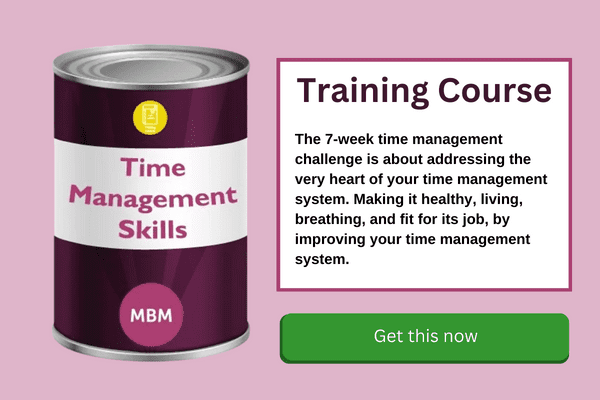Induction Checklist
An employee’s first impressions of an organisation have a significant impact on their integration. Induction is an opportunity for an organisation to welcome their recruit. It helps them settle in, and ensures they have the knowledge and support they need to perform their role. Effective induction can have an impact on an employer’s employer brand and employee turnover.

What is Induction?
When someone first joins a company, a positive first impression must be made. This will have a long-lasting impact on how they view their employer.
Through the induction process, employees adapt to their new jobs and working environment. In this context, “orientation” can be used to describe a particular event that new hires attend. “Socialisation” can be used to describe the process by which new hires establish relationships within their new teams. “Onboarding” describes the entire procedure. Which starts with a person’s first interaction with the company before formally joining. The employee continues through understanding the company’s operating procedures.
Every company, no matter how big or small, ought to have a carefully thought-out induction program. This leaves a new hire with a favourable impression of the business.
The job role, the new hire’s background, the size and nature of the organisation, as well as the induction’s length and content, all influence these factors. The objectives of a standard induction course are unlikely to be met. It should be customised for each new employee.
The Purpose of Induction
Induction ensures that employees integrate well into, and across, their new organisation. Research demonstrates that induction programmes benefit both employers and employees. For employers, these include reducing turnover and increasing employee commitment and job satisfaction.
An effective induction program helps employees who are anxious about beginning a new role in a new organisation. They can learn more about the company, their position, and working methods during induction, as well as get to know new coworkers.

A successful program will have many, integrated components. New hires need to understand the organisation, the culture, the people, and what is expected of them in their role. These components include the required health and safety information on the working environment. The training program should also acquaint the new hire with the company’s working policies. This includes time, place, and, if applicable, flexible working patterns, as well as its culture and values. Additionally, details about their particular role should be included.
Why is an Induction Checklist Important?
A new employee’s experience is positive when the induction program is well-designed. It means the employee:
- Quickly settles in.
- Assimilates into their team.
- Knows and respects the culture and values of the organisation.
- Feels backed up.
- Rapidly becomes productive.
- Works to their fullest capacity.
New hires may struggle to understand their roles without a good orientation, which may affect their desire to stay in the position. Such a turnover leads to:
- Recruiting a replacement will cost more and take more time.
- A waste of the inductor’s time.
- Decreasing morale among the remaining employees.
- Negatively affecting the leaver’s employment history.
- Repeating the leaver’s unsuccessful learning curve.
- Harm to the employer brand of the company.
According to this 2020 Resourcing and talent planning survey, 42% of organisations are improving their induction process.
Since more organisations are working remotely as a result of the COVID-19 pandemic. It’s crucial to customise induction programs to ensure new hires have a positive experience. Extra support should be provided for forming relationships with new coworkers.
Sticky Learning ® is 7 times more effective than 1-day training courses. Plus, you will get a Chain of Evidence proving your Return on Investment. Discover soft skills training that changes behaviours long term.

HR and L&D Teams’ Role in the Induction

Depending on the size and structure of the business, different parties will be responsible for the induction process.
A specific employee’s induction is the line manager’s responsibility. HR or L&D specialists are primarily in charge of designing, developing, and evaluating induction policies and programs. These professionals may also carry out some aspects of induction. They will be the employee’s first point of contact with the company. HR will make sure that crucial data is gathered, such as bank information and right-to-work documentation
More and more human resources professionals are realising the importance of employer branding. This has frequently resulted in an emphasis on the onboarding and induction process. This might mean checking that the pre-employment messages sent to candidates are hospitable.
How Do I Prepare for an Induction Program?
- Tell other people that there’s a new starter, prepare their working area, organise any equipment necessary and have any documentation ready for them to read.
- Prepare an induction checklist including all the items that need to be covered and what needs to be done when. You can plan for the induction to be spread over a period of days or weeks depending on the nature of the job.
- Get one person, ideally their line manager, to take care of a new starter throughout the first day.
- Ask for feedback during and after the process to check that you haven’t missed anything. You might want to give the new starter a checklist and ask them to sign it to show it has been completed.
The Induction Process
The induction procedure is influenced by an organisation’s size, structure, and role as well as the new hire’s position.
Induction should include information about systems and company strategy. It should include an introduction, whether virtual or in-person, to the larger team. This makes sure that new hires have something scheduled for the first few weeks and are aware of how their role fits. It’s a good idea to share information about employee network groups, and social media platforms.

Digital tools help new hires connect with colleagues in other company departments. The process is essential to guarantee a satisfying experience for the new starter.
Organisations are also focusing on the employee experience before the start of employment. They make sure pre-employment communications are interesting and utilise social networking sites. This is especially typical for graduate admissions.
The process must continue once the employee is on the job. Managers and HR should take into account the ongoing help a new hire will need to adjust to their new environment. “Buddy” or coaching and the mentoring system can help new hires adjust. Mentors will make sure recruits know the learning opportunities available to them.
Using a Formal Induction Course
Larger organisations formalise the induction process through a mix of one-on-one conversations and group learning sessions.
The Advantages of an Induction Course Include:
- Ensuring that all applicants receive a constant message of positivity about the employer’s brand.
- Utilising a variety of interesting communication methods, such as group projects or discussions.
- Allowing new hires to interact socially and form connections across functional lines.
- Using digital tools to spread information among scattered recruits.
But, there are also caveats which include:
- If not properly tailored, induction may cover subjects that not every new employee will find interesting.
- The risk of sharing information too late exists when induction occurs weeks after employment.
- Induction can be overly impersonal and involve managers instead of coworkers.
What to Avoid
- Giving the new member too much information too soon is not advisable, especially on the first day.
- Pitching presentations at the wrong level. Presentations should take into account the prior knowledge of new hires.
- It should be a collaborative process between HR and local managers.
- Creating an orientation program that exaggerates the job to raise unrealistic expectations.
- Putting together an induction program that does not take organisational values into account. It should only focus on administration and compliance.

Evaluation
An effective induction program should be interesting and reassuring to the new hire.
Recruits should have the chance to identify areas for improvement. They should provide feedback after the induction process.
It’s important to identify important indicators of the induction process’s success. Also, get feedback from new hires. Specifically from those who leave within the first 12 months of employment. Information from turnover statistics or employee feedback is useful.
What Must Be Included in an Induction Checklist?
Answering the classic five W and one H questions—who, what, when, where, why, and how—can help when planning a great employee induction.
Who?
It’s crucial to define their roles as part of the employee induction process:
- Engaging directly.
- Reporting to.
- Working with indirectly.
- Interacting with occasionally (for example, C-level executives).
- An organisation chart can be a helpful tool for addressing the “who” question.
What?
What will a worker do each day? Their job description provides the answer to this query. Regardless of how well-written it is, a worker must still be aware of what is expected of them. The specific tasks they will have, as well as the deadlines and methods for doing so need to be clear.

When?
Before starting their first day of work, an employee should be aware of their working hours. It’s crucial to make sure they understand when they can take breaks. The last thing you want is for a new employee to leave their first day of work “hangry” because they didn’t know that taking a lunch break was acceptable!
Where?
The location of an employee induction used to be fairly clear. They sit at a specific desk and work at a specific office (unless their position requires them to travel). By the end of the employee orientation, they should be able to locate the kitchen and any other office facilities. As well as where the restrooms are and how to get to the emergency exits.
These days, answering the “where” question is a little trickier. Due to hot-desking, remote working, and even remote onboarding.
Why?
Answering the “why” question during employee orientation can be challenging. Employees can make decisions with less uncertainty thanks to a company’s core values.
New hires will more quickly feel a part of the culture if you explain the importance of behaviour. You should share accomplishments, and introduce them to outstanding cultural ambassadors. Additionally, it lessens uncertainty and leaves workers with a positive impression. This encourages them to return the following day, week, month, and year.
How?
On the first day, it’s not always possible to fully explain how to do the job. So, it is preferable to give employees a plan of how to get started and then help them along the way.
Here, an induction checklist is crucial as you can’t explain every task on the first day. By doing this, you can see what you explained and what you need to explain.
Remember: It can be unsettling for new employees to ask questions, especially if they believe their inquiries are foolish. However, guiding them through this learning curve now will pay off later.
The Key Details in an Induction Process are in the List Below

Pre-employment
- Joining guidelines.
- The ability to work legally in the country must (if necessary and not already done during recruitment).
- New starter forms (allowing for the immediate setup of eligible benefits and bank account information).
- The working environment.
- Literature or other media used by organisations
On-site Health and Safety Induction List
- Emergency exits.
- Evacuation techniques.
- First aid stations.
- Health and safety regulations.
- Accident reporting.
- Protective attire.
- Specific risks.
- Smoking regulations.
All Workplaces Compliance
- Security measures.
- Confidentiality.
- Training in topics like modern slavery, bribery, and data protection.
Facilities and IT, as Appropriate
- Site map: first aid station, cafeteria, etc.
- Tour of the workplace on-site with a guide and explanation of regional practices.
- Information about telephone and computer systems.
- A security code.
- Parking pass.
- Operating times.
- Tools for remote and flexible working.
- Access to business systems, including pertinent communication and file-sharing platforms.
Organisation Information
- Organisational history.
- Structure, worldwide or departmental.
- Organisational tactics.
- Products and services.
- Quality systems.
- Customer care policy
Culture and Values
- Goals and objectives.
- Employer brand.
- Values.

Benefits and Policies
- Pay – the date and manner of payment.
- Taxes and social security.
- Plans for employee or stakeholder pensions.
- Other benefits.
- Costs and expense reports.
- Work schedule, including hours, flextime, and break arrangements.
- Holidays paid time off.
- Probation period.
- Diversity and inclusion guidelines.
- Health plan, including the procedure for absences and illnesses.
- Policies for the internet, intranet, email, and social media.
- Performance management system.
- Disciplinary action.
- Grievance procedure.
- Employee assistance programs.
Role-specific Information
- A detailed description of the job or role requirements.
- Team introduction and methods of operation.
- Meeting with important senior staff members (either in person or online).
- Organisational orientation; explanation of the employee’s position within the team
Learning and Development
- Opportunities for growth and internal courses.
- Personal Development Plan and CPD.
- Career direction.
Risk-Based Induction Checklists
Due to the various risks an inductee will face, you’ll frequently have different induction checklists. A high-risk contractor will be working in hazardous conditions or performing tasks that involve high risk. They may undergo a much more thorough induction process. High risks include electrical work, working in cramped spaces and using elevated work platforms. They must include a much wider range of specifications on their checklist as part of those risks. A low-risk contractor will get a shorter checklist that addresses safety policies.
What are the 3 Main Types of Induction Training?

Pre-Induction
During this period they would get a tour of the physical premises and training activities.
Induction
This is the actual transition to the workplace. Employers should revise safety hazards and regulations. The induction phase has no set period.
Post-Induction
Following up on new employees’ for weeks of their new roles is crucial. This will increase productivity and decrease the turnover rate.
What’s the Ideal Duration for a Staff Induction?
There is NO correct response because there are so many variables. Consider the company’s size, its background, and an overview of the organisational structure first. Review any necessary IT inductions for new hires after that. Include thorough HR induction for new hires as well. Plan customer service training sessions and other soft skills training as necessary.
Avoid the error of attempting to do too much in a brief period. A similar caution applies to rushing a new hire into a position without proper training. The following are some reasons why this will ultimately cost your business money.
- More errors are probably going to occur.
- New hires are more likely to become impatient and quit.
- It will directly and adversely affect the customer experience.
From day one, new hires will receive a top-notch staff induction pack. This keeps happening until probation is over. It will cover the main categories of staff induction instruction. So, when planning your staff induction, be sure to take this time frame into account.
Induction Checklist for Different Staff Roles
Contractors, Employees, and Visitors are the most frequent staff that you might include in an induction checklist.
Visitor Induction Checklist

The purpose of a visitor induction checklist is to make sure that a visitor has understood key safety policies. It has to be a brief and simple induction list of acknowledgements.
Contractor Induction Checklist
A contractor induction checklist could cover information such as verifying licences and protocols.
Employee Induction Checklist
Being job ready is the main focus of an employee induction checklist. If a new hire is joining your organisation, will they be prepared for their position? Do they have an account set up, and have they given their employee contract? Has a line manager been set up to follow up? Have they completed the employee induction, and are they onboarded into the department? Are these items on the checklist?
Check out this free employee induction template UK.
Company Induction Checklist
The purpose of a company induction checklist is to onboard new suppliers. It makes sure they have completed your contractor management system’s vendor.
Top 5 Induction Team Activities
At some point in their careers, everyone has attended an awkward induction day: the icebreaker activities are worn out and overdone; the facilitator has already led ten other inductions that week; and frequently, the majority of the day is taken up with paperwork.
How can you prevent your team from dreading their first day of work when you run an induction day for your venue?
Team Building Bingo

Everyone enjoys playing bingo because it is easy to learn and entertaining
Additionally, if some of your team members are working from home, this is a particularly smart choice. As it’s simple to adapt to video conferencing.
Team building bingo allows you to see who communicates well and can think on their feet rather than calling out random numbers or words. It also encourages your new team to interact with one another and get up from their seats.
How it Works
Create a square bingo board that is 4×4 (or 5×5 or 6×6 – however big your heart desires!) and write “fun facts” in each box. For instance: ‘Has been to Bali,’ ‘Has three or more siblings,’ or ‘Has worked a bar job.’ Keep them relatively broad to give your team a fighting chance. Put each fact on a slip of paper and mix them to draw from a hat.
Then, call out one slip of paper at a time, just like in traditional bingo, to see which member of your team it applies to. This is a fantastic way to get the team talking and help them get to know one another better. Sharing personal anecdotes or secrets (while still keeping it work-friendly, of course) promotes trust. This is a crucial component of a powerful hospitality team.
Offering a prize to the winner, such as a free meal, a bar card, or a box of candy, is a fantastic way to encourage participation in the game.
Team up and Enrol in a Quick Course
Many studies have shown that employees feel motivated at work when they get opportunities for growth within their roles.
A fun, low-pressure course is a great way to show your team that you care about their professional development. That you’ll help them learn new skills while they work, and that even though you take your job seriously, you still have fun!
Mystery Box
This activity is a great way to get everyone involved, learn more about your new hires, and encourage entertaining storytelling. Rather than having your team members ask each other the same questions over and over again.
How it Works
Write 10 to 20 questions on cards and put them in a box before the induction. Make sure the interview questions are engaging, such as “What is the worst movie you have ever seen” or “Who is your favourite celebrity chef and why?”
Take short breaks throughout the day and ask a team member to choose a question. The team can then discuss the question’s answer in small groups if the conversation flows well.
Induction Checklist Templates

You can find a free acas induction checklist template. This cleaner induction checklist can also be beneficial. This site induction template is helpful for small construction sites. This pilot and front-line induction form template includes details about the company policies which can be helpful.
Conclusion
Whether your business is small or large, you should put in place a formal induction procedure for new hires to make sure they succeed in their new positions.
Inform them at the start of the onboarding process that you would like feedback at various points to determine any adjustments you might need to make for the upcoming new team member. This will assist you in advancing your induction techniques over time. Consider how you can be innovative in your approach as well. Some businesses turn the induction process into a game by giving new hires and trainers levels to advance through the process and earn rewards.
Whatever approach you decide on, create an induction plan and a solid system early on to make sure you quickly train new hires and aid in their longer retention.
To learn more about how businesses can offer employees quality inductions, read our other article.




